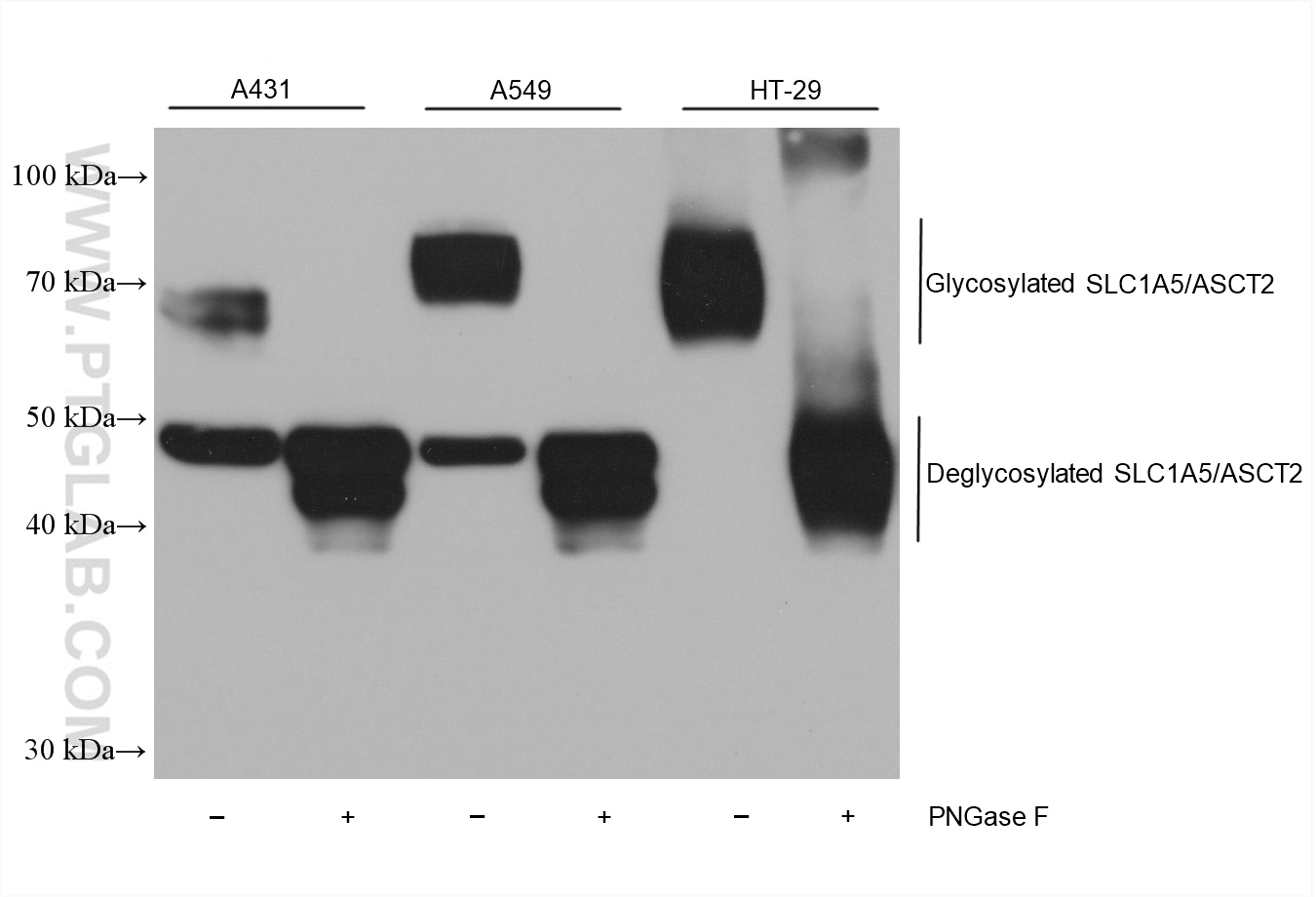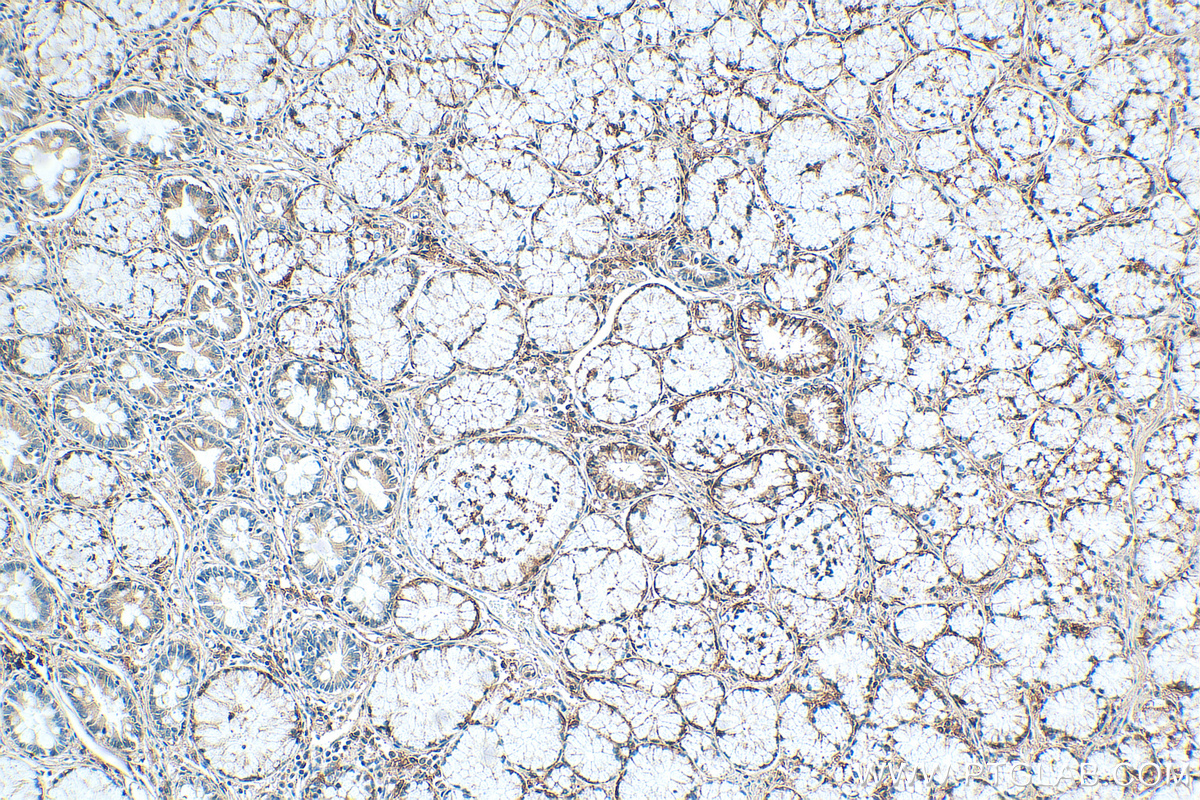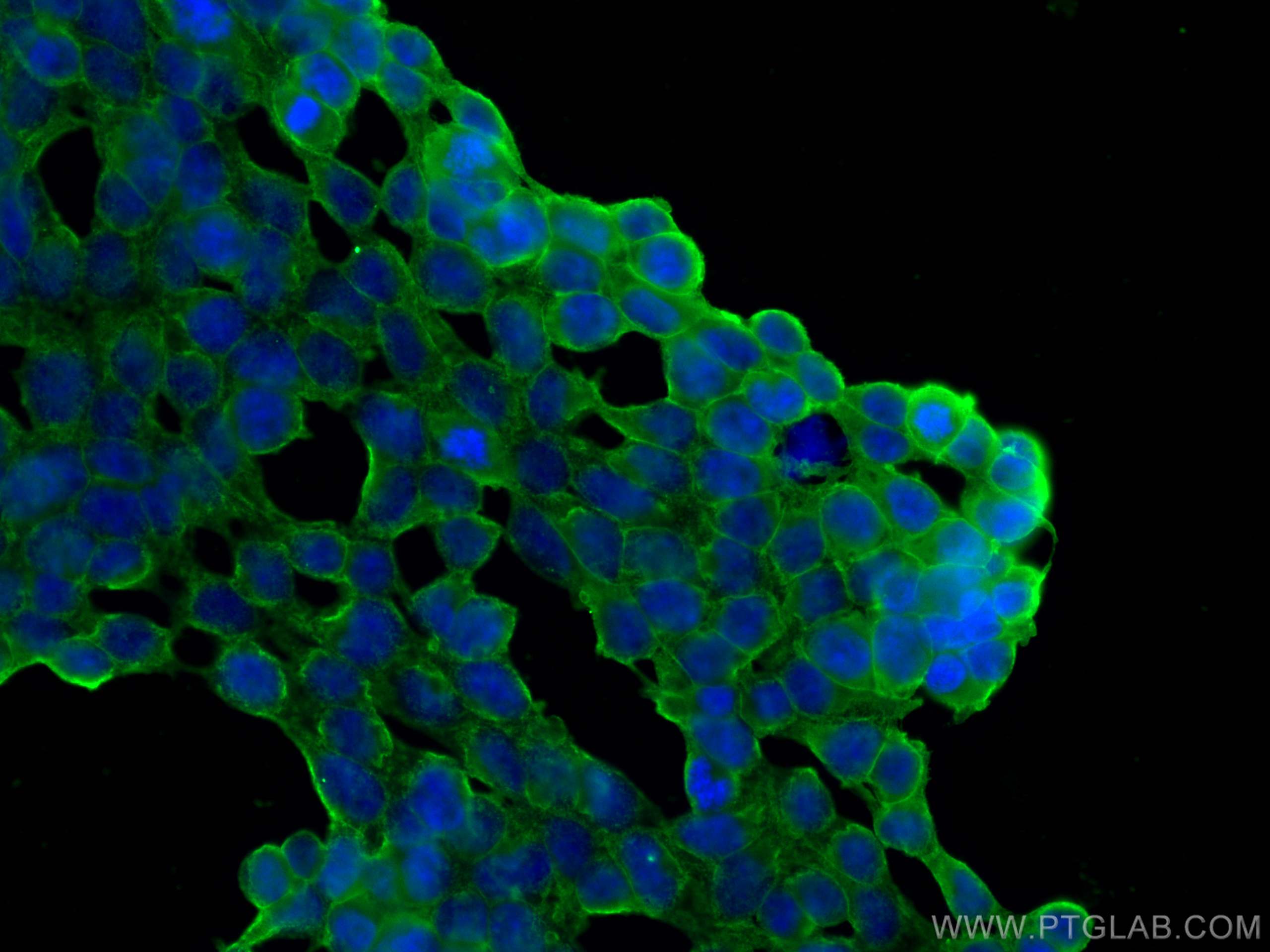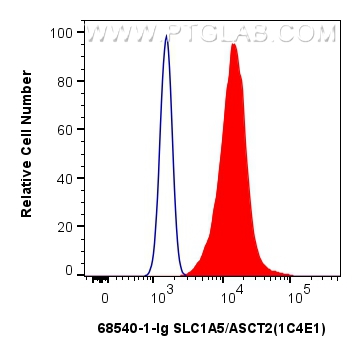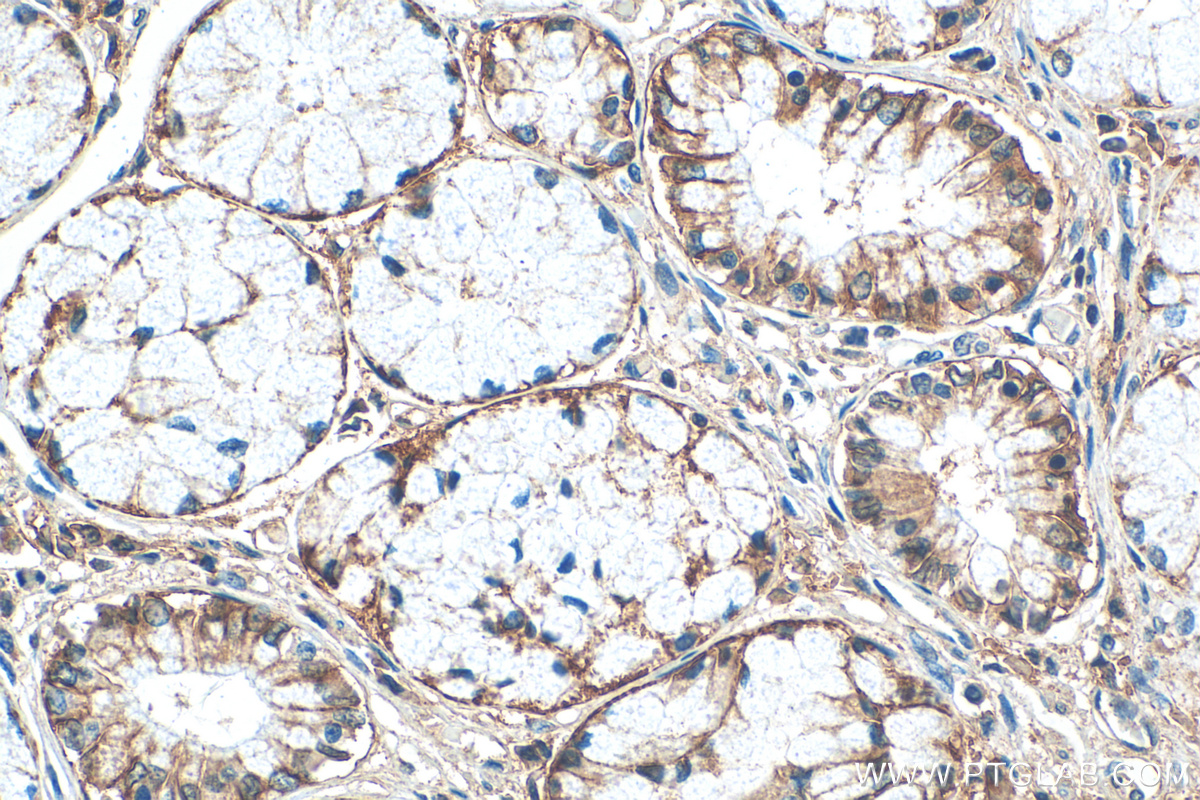验证数据展示
产品信息
68540-1-PBS targets SLC1A5/ASCT2 in WB, IHC, IF/ICC, FC (Intra), Indirect ELISA applications and shows reactivity with human samples.
| 经测试应用 | WB, IHC, IF/ICC, FC (Intra), Indirect ELISA Application Description |
| 经测试反应性 | human |
| 免疫原 | SLC1A5/ASCT2 fusion protein Ag16837 种属同源性预测 |
| 宿主/亚型 | Mouse / IgG1 |
| 抗体类别 | Monoclonal |
| 产品类型 | Antibody |
| 全称 | solute carrier family 1 (neutral amino acid transporter), member 5 |
| 别名 | SLC1A5, Baboon M7 virus receptor, ATBO, ATB(0), ASCT2 |
| 计算分子量 | 541 aa, 57 kDa |
| 观测分子量 | 55-70 kDa |
| GenBank蛋白编号 | BC000062 |
| 基因名称 | SLC1A5/ASCT2 |
| Gene ID (NCBI) | 6510 |
| 偶联类型 | Unconjugated |
| 形式 | Liquid |
| 纯化方式 | Protein G purification |
| UNIPROT ID | Q15758 |
| 储存缓冲液 | PBS only , pH 7.3 |
| 储存条件 | Store at -80°C. The product is shipped with ice packs. Upon receipt, store it immediately at -80°C |
背景介绍
SLC1A5 (Solute Carrier Family 1, member 5), also named as ASCT2, a major glutamine transporter belonging to the SLC1 family and localized in the plasma membrane of several body districts. Consistent with the functions exerted by glutamine, SLC1A5 is involved in uptake of essential amino acids, activation of mTORC1 and glutamine-dependent tumor cell survival and growth. SLC1A5 is highly expressed in various malignancies and plays a critical role in the transformation, growth and survival of cancer cells (PMID: 30234109). High SLC1A5 expression is associated with poor prognosis in clear-cell renal cell carcinoma (PMID: 26599282).
